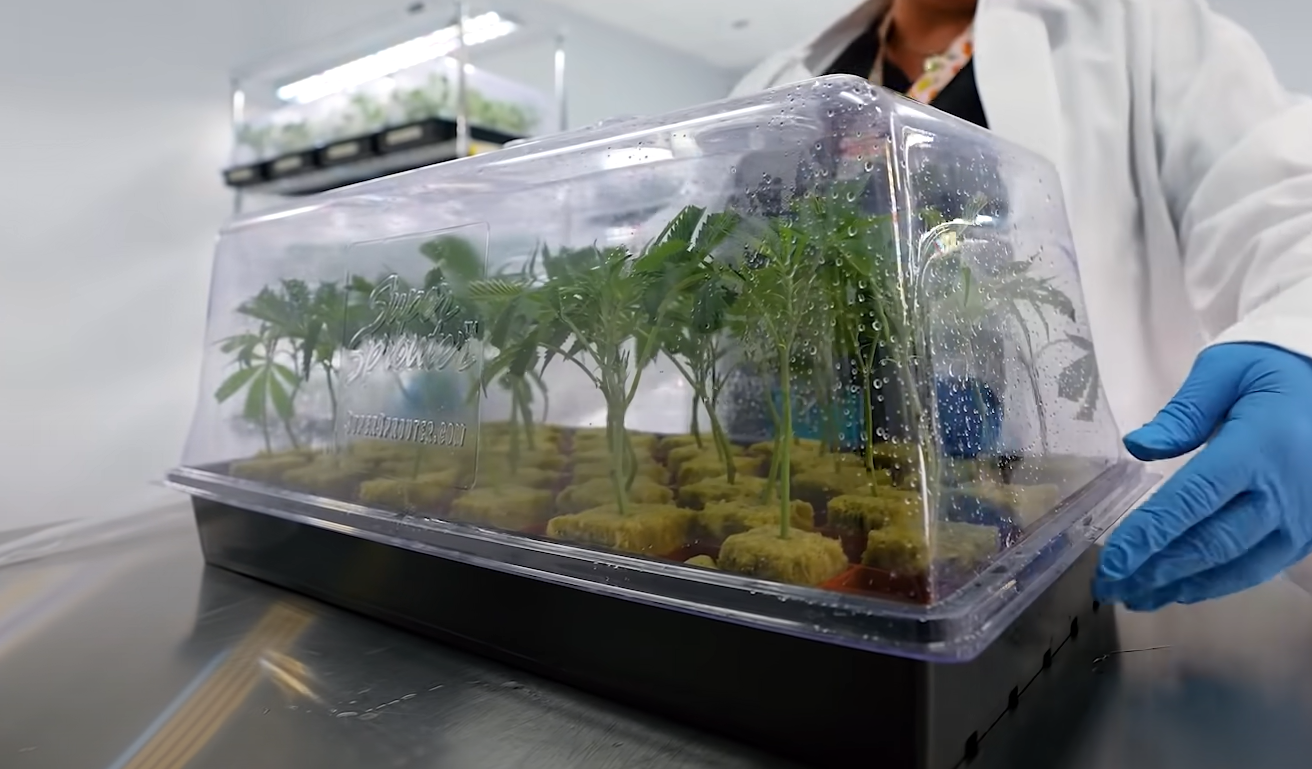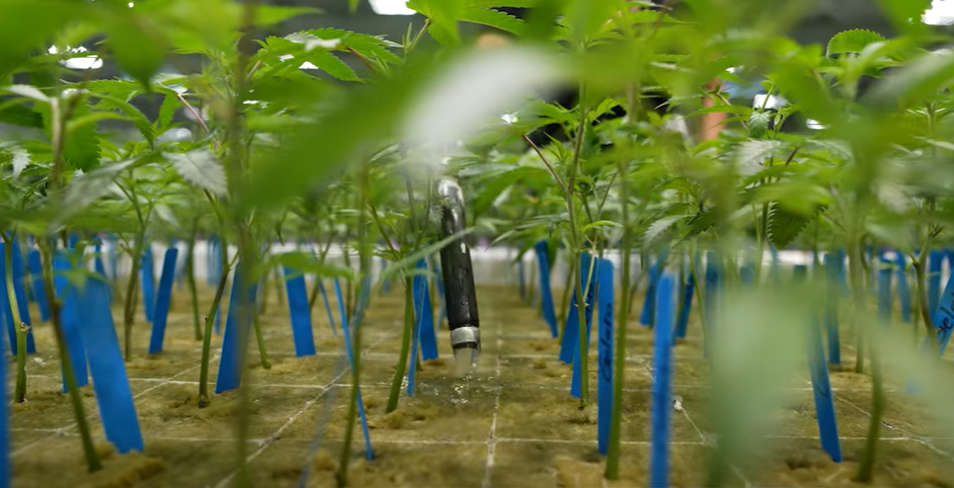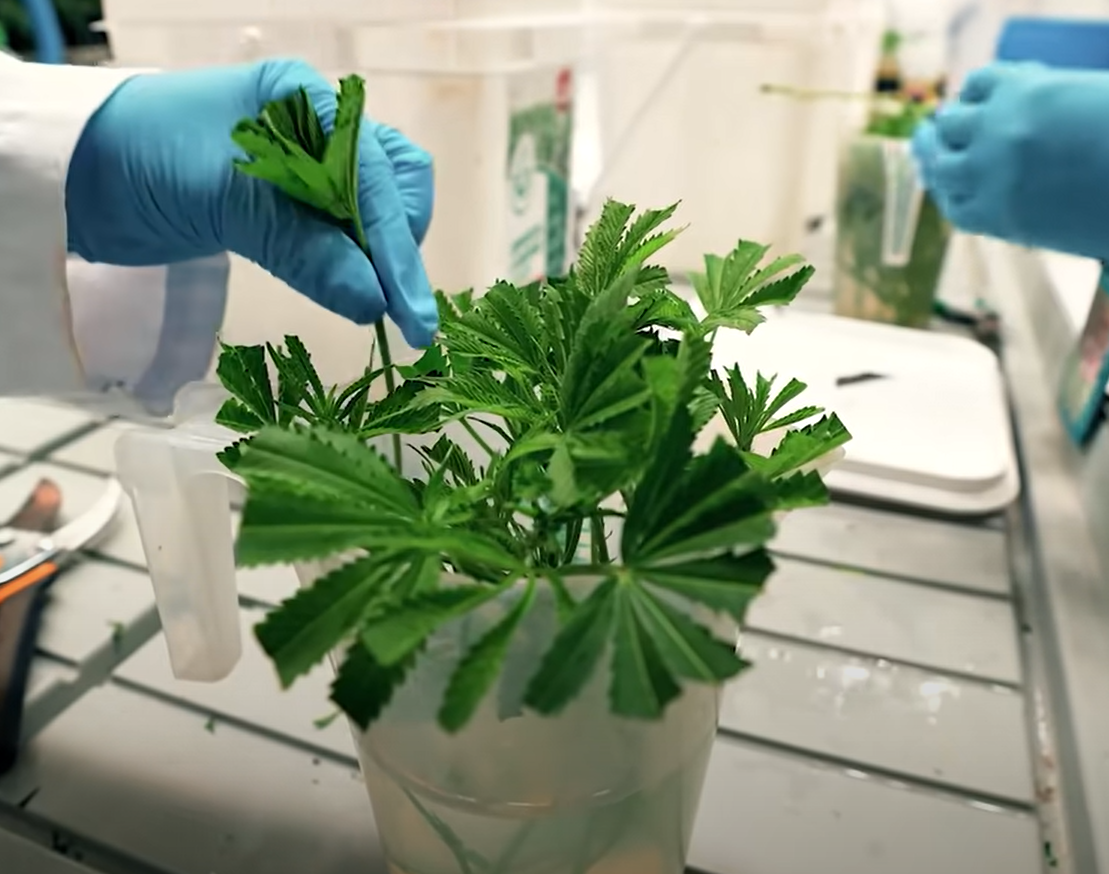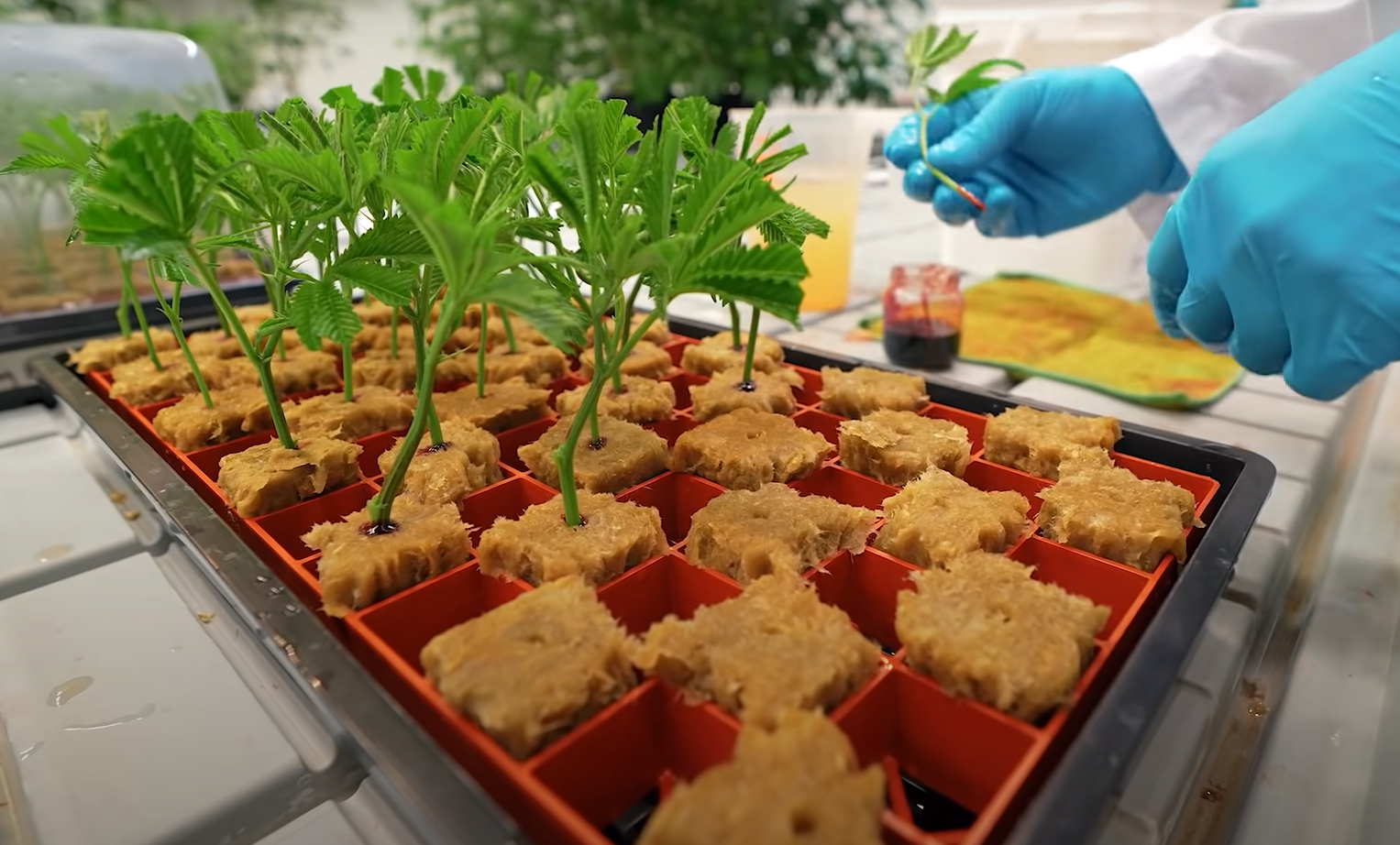Perfecting the Propagation of Cannabis Cuttings By Douglas R. Jacobs
I invited Gro_Doctor Douglas Jacobs, Technical Advisor at Grodan, to write a guest blog for us. With over 50+ years of precision growing and cannabis cultivation knowledge, Grodan are leading industry experts and if you grow indoors with stone wool you really want to read this. They are addressing six common mistakes during the Propagation of Cuttings. Very well-researched article and very useful information.
Ed
Growing the perfect cuttings is the cornerstone to growing the best crop. For some growers using Grodan stone wool ensures the cleanest, most consistent start, while for others, it can appear more challenging in comparison to other growing media like Coco or peat plugs for instance. Below we have outlined the six of the most common challenges growers encounter and how best to avoid them.
Watering too early.
Cannabis cuttings, in particular, are sensitive to overwatering, so applying the first irrigation too early can delay root formation, reducing cuttings’ success and thus compromise the yield and quality of the flowers. Using the weights of the tray or individual cubes can give you valuable insight into when to apply your first irrigation for your specific cultivars and growing setup. To figure out the ideal dry back first weight individual growing cubes or complete try after initial saturation and after placement of the cuttings. Weigh the tray every few days and record the weight. Take note of when your cuttings start initial callus formation and developing roots. Record the weight of the trays when you feel you have proper initial rooting in and through the stone wool.
Depending on the light intensity, temp, humidity and leaf area of the cuttings, growers will dry back to 50% or less of the weight at full saturation, which most growers will achieve in 5 to 7 days. Some cultivars under mild environmental conditions might require a much lower water content to develop roots consistently, which in some cases may take more than ten days to achieve. Only through regularly measuring trays or individual cuttings can you determine the optimum dry back and environmental conditions per cannabis variety and repeat it from crop to crop.
Overwatering.
Grodan stone wool, more than almost any other growing media, has one of the highest water holding capacities. Also, due to the unique composition of the rock fibres, more water is readily available for uptake by the plants compared to other organic media . It’s easy to see how common overwatering can be in smaller Grodan starter cubes and blocks. The more water you apply or the deeper you submerge the cubes, the more air you push out of the substrate. The excess water slows down root development and weakens the cuttings making them more susceptible to diseases.
For the first irrigation, after dry back, the water only needs to touch the bottom of the cubes or go up to a quarter of an inch up the side if using a flood or “dip” method of irrigating. If top watering, a quick gentle spray or mist of the growing media is all that’s needed to re-saturate the growing media, refreshing the substrate without drowning out the young developing root zone. Some growers may opt to grade their cuttings at this point, separating ones with roots showing out of the cubes from the ones that are not showing any roots to prevent overwatering. At the time of the first irrigation, growers should measure the tray or cube before and after irrigation and then record the weights and experiment with the saturation levels to find what works best based on the specific variety being propagated.
Using too low nutrient concentration in a soak solution
Stone wool is inert and doesn’t come with any nutrients for the plant, so it is up to the grower to provide all the nutrients in the soak and feed solution. Growers are often told plants without roots don’t need any nutrients; unfortunately, this couldn’t be further from the truth. The plants are still active, though we have reduced transpiration by removing leaves and leaf tips and placed the cuttings under low light conditions in a mild climate. The cuttings are still taking up water. That is how the plants still maintain turgor pressure and don’t just wilt and die. If there is no nutrient in the stone wool, the plant will become deficient and consume whatever nutrient is available in the remaining leaf material.
Just like when you buy cut flowers for someone, and they come with a little package of nutrients to place in the vase with the flowers. Even though the flowers have been cut, they’re still alive, and those nutrients will help keep the flowers alive and vibrant longer even though they have no roots. Not using any nutrients in your soak solution will create weak cuttings with nutrient-deficient tissues that are more susceptible to disease, which can carry through the rest of the plant’s life cycle. Through our scientific trials, we found that 1.5-2.0 EC is ideal for soaking stone wool for cuttings. If you’re not using anything in your soak solution already, we recommend experimenting with different nutrient concentrations as they can be different depending on the cultivar and your unique environmental conditions.
Removing too much leaf material
It’s relatively common for cannabis growers to cut a lot of leaf and leaf tips off their cuttings to slow transpiration and fit more cuttings per tray. Unfortunately, this common practice can lead to inconsistencies in rooting, and eventually, plant quality and flower success. Leaves are not only solar panels but also batteries, providing a reserve of nutrients and water when the plants need it the most. According to a trial conducted by Caplan (2018), “removing leaf tips reduced rooting success rate from 71% to 53% without influencing root quality.
Cuttings with three leaves had 15% higher root quality compared to those with two, but leaf number did not influence rooting success rate.” The trick with keeping more leaves is proper density, as well as proper humidity and measuring the dry back, because cuttings with more leaves will transpire more often, which causes the substrate will dry out faster.
Overcrowding cuttings in a tray
Much like removing too much foliage, overcrowding cuttings in trays can create inconsistencies and make for the perfect environment for foliar diseases. When leaves touch or overlap, this not only prevents the cuttings from receiving light but also creates moist conditions ideal for creating foliar diseases.
Overly crowded conditions also signal the plants to grow up instead of out, so growers should try to give their cuttings just enough room for each to receive full light without shadowing or touching its neighbor. When cuttings are kept in domes, the cuttings touching the dome's edge usually end up growing differently. They can even be more susceptible to disease because the leaves are almost constantly wet. If you have the luxury of space, try checker-boarding.
Taking cuttings from old mothers
Old mother stock seems to be one of the most significant factors for cuttings’ success. The older the mother, the more stress, pests, and diseases it can potentially harbor and spread to each subsequent batch of cuttings it produces.
More from the Caplan (2018) study, “the ability of stem cuttings to form adventitious roots often depends on the maturity of the stock plant. Cuttings from juvenile plants generally have improved rooting over those from mature plants (Altamura 1996). Juvenile plant material sometimes has a higher content of endogenous auxins and other rooting promoters compared to mature material (Husen and Pal 2006).”
Ideally, mothers should not be kept and used for cuttings if they are more than 3 or 4 months old. Growers should measure cuttings success rates and the number of cuttings per plant to determine when to get cull mothers. When the success rates start to decrease, that’s your signal to cull and replace those mother plants.
Another method, which is beginning to be adopted by more discerning growers, is growing out a batch of mothers and cloning them to destruction. The idea is that the first batch of cuttings from the young mother plants is the strongest. After taking the cuttings, the plants are weakened, and each batch taken after only further degrades the health and quality of the mother, even though it may not show any visual signs of stress. By using only fresh material, you can better ensure that the health and quality of the mother and subsequent cuttings are at peak health from batch to batch.
For more technical advice and to learn more about our products, please visit Grodan101.com.
Source:
Caplan, D. M. 2018. “Propagation and Root Zone Management for Controlled Environment Cannabis Production.” The University of Guelph. Thesis. Available at: https://atrium.lib.uoguelph.ca/xmlui/handle/10214/14249













